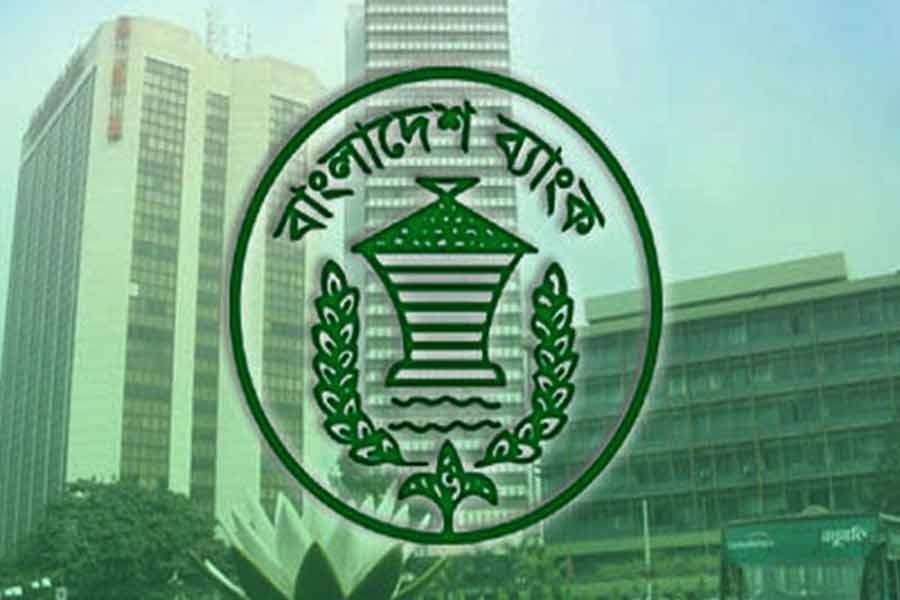Financial stability without interest cap removal: A hard row to hoe

Muhammad Nafis Shahriar Farabi
Published :
Updated :

Bangladesh Bank (BB) imposed a cap on the lending rate at 9.0 per cent, which came into force in April 2020. It is inferred that BB took this decision to boost private investment and create employment opportunities significantly.
Demand for loans declined amid the Covid situation. Businessmen and industrialists didn't seek new investment opportunities in this vulnerable situation. Lowering the lending rate, the central bank made it easier for companies to receive credit to boost investment and create more employment opportunities.
We observe that the private sector credit growth reached a 4-year high in FY22. When the central bank implemented the 6-9 deposit and lending rate, respectively, in April 2020, the private sector credit growth was 8.8 per cent which increased to 13.7 per cent in June 2022.
This shows increased economic activity in the country amid the interest rate cap regime, especially after lifting the lockdown restrictions. However, investment not only depends on interest rate; savings rate, future expectations, and other factors play a key role here.
Lowered interest rates adversely impact savers, encourage risk-taking behaviour, distort the financial markets, and create problems maintaining the economy. A low interest rate environment also has a significant impact on Non-Performing loans (NPL). Empirical evidence reveals an ambiguous relationship between low interest rates and NPL.
However, in recent times, we observe that amid the lower lending interest rate of 9 per cent, the country's banking sector in 2021 has observed a 16.38 per cent increase in year-on-year NPL. This has been the issue despite relaxation in the loan classification policy of the BB.
A prolonged period of low interest rates also damages the profitability of banks and life insurers. Lowered lending rate means banks are charging less for loans. This impacts the bank's profitability, resulting in increased financial sector vulnerability. Lower rates lead to increased government and corporate debt, make inequality more severe and result in the economy has a greater dependence on fiscal support. When the interest rate is low, the central bank cannot make necessary adjustments, as the rate is already too low.
The interest rate cap has side effects, including lower credit supply and loan approval rates for small and risky borrowers. Banks become even more disinterested in providing loans to SMEs at lower lending rates as they perceive SMEs as risky investors. The target for loan disbursement for the Cottage, Micro, Small and Medium Industries (CMSME) sector was BDT 20,000 crore in FY22. However, only 67.52 per cent of the target loan was disbursed.
A lower lending rate cap results in lower deposit interest rates. Due to returns as low as six per cent, depositors tend to shy away from banks, especially amid the high inflation scenario. In August this year, the inflation rate soared to 9.5 per cent, which is the highest in a decade. Several empirical studies suggest that a lower deposit interest rate causes a decline in the deposit growth rate.
In a time of higher inflation, while other countries worldwide are raising interest rates, BB has kept the interest rate cap operational, turning a deaf ear to the textbook solution. One country which is not following the textbook solution of combating higher inflation is Turkey. The country has been cutting their interest rate amid surging inflation.
In August 2022, the country recorded an inflation rate of 80.2 per cent. Amid the ballooning current account and trade deficit, the lowered interest rate has depreciated the Turkish lira more than 27 per cent on a year-on-year basis. Lowering interest rates makes it hard for Turkey to attract capital flows, as we know that higher interest rates tend to attract foreign capital flows and appreciate the domestic currency.
Due to lower deposit interest rates, depositors opt for government savings tools as they provide higher yields than banks' deposit products. They may also choose their funds to be parked in the capital market or real estate, and some may even turn to money laundering.
Bangladeshi individuals' and enterprises' deposits in Swiss banks in 2021 have seen a surge of 55 per cent from the year 2020, which may be indicative of higher cases of money laundering. The overall deposit growth rate was highest for Bangladesh in South Asia, followed by India.
Lower deposit rates also create a shortage in the quantity supplied of loanable funds for the banks. On the contrary, a lower lending interest rate decreases the cost of borrowing, resulting in a surge in the quantity demanded of loanable funds. So, an imbalance in the market for loanable funds is observed.
Another issue that needs to be addressed is aligning the key policy rates with the interest rate. With lower lending rates still operational, the inflation rate is anticipated to increase.
In 2020, due to the alarming Covid situation, the key policy rate, also known as the repo rate, was slashed down to revive economic activity. However, BB has increased this repo rate gradually owing to rising inflation. But without removing the interest rate cap, a hike in the repo rate is expected not to be fruitful.
Interest rate cap has a significant impact on the financial stability of an economy. Therefore, BB needs to seriously consider the existing lending cap to ensure stability in the financial sector. Without removing the cap, the economy's financial stability may be jeopardised due to reduced foreign exchange reserves, currency depreciation, the dollar crisis, and higher inflation rates.
Muhammad Nafis Shahriar Farabi is a Research Associate at the Bangladesh Institute of Governance and Management (BIGM).
nafis.shahriar@bigm.edu.bd


 For all latest news, follow The Financial Express Google News channel.
For all latest news, follow The Financial Express Google News channel.